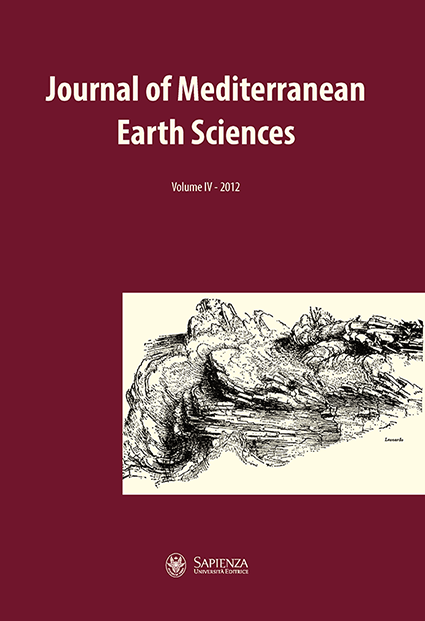An overview of the Holocene vegetation history from the central Mediterranean coasts
DOI:
https://doi.org/10.3304/JMES.2012.003Abstract
A review of twenty-six pollen records from coastal areas of central Mediterranean countries (including Malta, Sardinia, Corsica, Italian Peninsula, Sicily, Croatia, and Greece) is presented, in order to describe the general processes characterizing the environmental evolution of this region and to detect the main causes producing landscape change during the last thousands of years. An overview of the main vegetation types shows a rather diverse composition and structure of the vegetational landscape, mostly depending on geomorphic situations, climate conditions, biological processes and human history. This variability makes it impossible to define a pollen stratigraphical scheme valid for the entire area during the last thousands of years. A general and progressive anthropization trend of the vegetational landscape is observed since the Neolithic, evolving with different times and modes from site to site. In many cases human populations adapted their activities to the locally existing natural resources, for example by exploiting native plant taxa (e.g., Olea, Vitis, and Quercus suber) or transforming natural coastal wetlands in saltworks, always determining deep landscape changes and depletion of the native biodiversity. The responses of vegetation to geomorphic processes and climate have generally been different from site to site: in some cases only one sector of the central Mediterranean Basin was involved (e.g. Tyrrhenian expansion of Alnus around 5200 cal. BP), while in other cases extensive geographical processes occurred (e.g. development of coastal wetlands around 7000 cal. BP).
This long-term environmental perspective indicates that the current coastal ecosystems of the central Mediterranean Basin represent an ephemeral snap-shot, destined to new, abrupt and dramatic future changes. Thus, palaeoenvironmental studies may prove of fundamental importance in estimating both the environmental instability typical of each geographical context and the degree of vulnerability of coastal ecosystems, so providing suggestions for appropriate conservation actions in coastal environments.
Downloads
How to Cite
Issue
Section
License
The submission has not been previously published, nor is it before another journal for consideration (or an explanation has been provided in Comments to the Editor).


